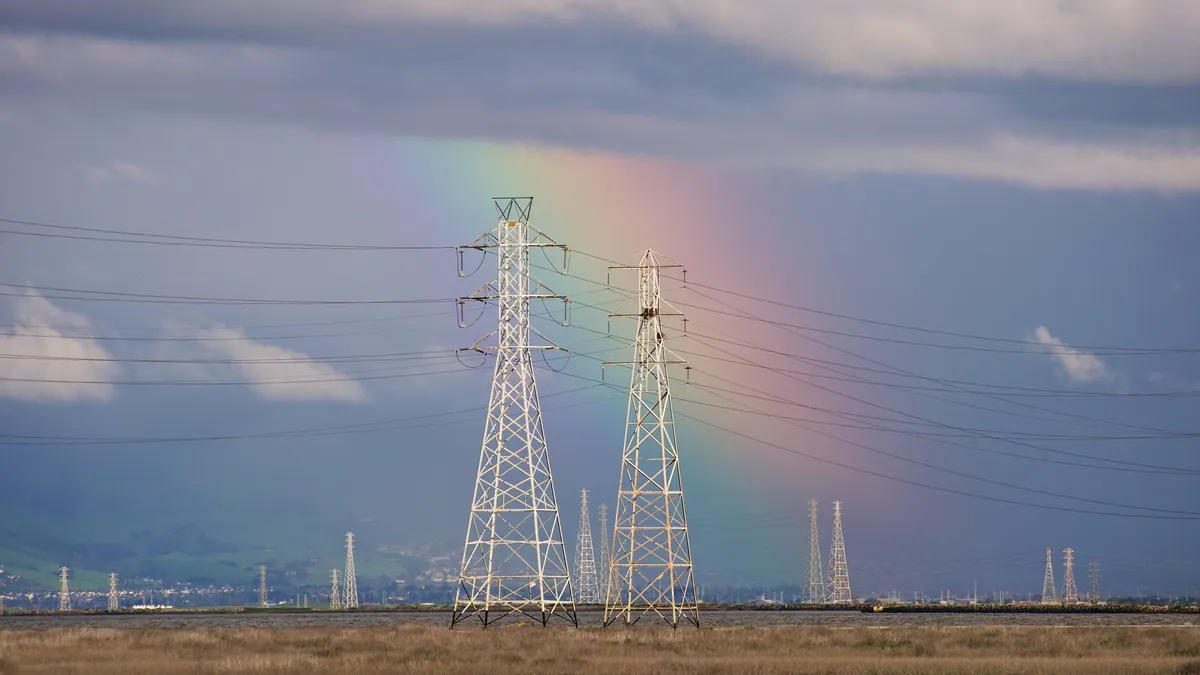Robin Allen is a senior fellow with the Niskanen Center Climate department.
The thorny problem of overcoming opposition to the extensive buildout of transmission infrastructure, which the nation needs to achieve its reliability and climate goals, has so far been considered only from a top-down perspective.
Planners and developers typically believe they must persuade, cajole, incentivize and sometimes coerce local communities into accepting new high-capacity power lines. However, a careful review of recent projects suggests an entirely different model: stakeholder-driven transmission, where communities proactively seek out transmission developers to host these projects.
Where will that demand come from? It will stem from the growing recognition that a transmission corridor can be reimagined as a broader infrastructure corridor, offering local communities vital new services beyond improved energy service.
Not only is there significant money on the table in projects that connect new generations to load centers, but there is also now a clear record of communities making actual deals to benefit from those funds.
Why all this money on the table for states willing to partner with developers — i.e., why have states and stakeholders been granted significant co-located infrastructure in exchange for state support of the transmission line? “Money on the table” comes from two significant sources. First, there are typically sizable price differences in wholesale electric generation prices between U.S. regions — merchant transmission developers can arbitrage these differences to finance new lines. Second, developers save significant time and money if states facilitate the siting and permitting process. Such cooperation can free up funds for stakeholders to use on desired co-located amenities.
As I show in a just-released report from the Niskanen Center, recent history provides plenty of examples of deals, incentives and accommodations made to facilitate lines. These include burying lines, offering line co-ownership, providing special funds, siting in existing corridors and agreeing to alternate routes.
Some specific examples: in some instances, developers are willing to pay the higher costs of burying high-capacity transmission — for example, SOO Green HVDC Link and Champlain Hudson Power Express — to obtain line approval. In Missouri, Invenergy increased the amount of power deliverable to the state from 500 MW to 2,500 MW. This incentivized the Missouri Public Service Commission’s approval of its proposed Grain Belt Express line. Southern California Edison granted the Morongo Band Tribe an option to invest up to half the total construction cost for the West of Devers Project, allowing the tribe to earn revenues well into the future.
Stakeholder-driven initiatives may be especially promising when lines do not rely on existing utility rights-of-ways. In such cases, there is greater flexibility in terms of routing, and these lines are often developed by merchant transmission companies, who are typically only bound by market conditions rather than cost allocation.
Second, developers save significant time and money if states facilitate the siting and permitting process. Such cooperation can free up funds for stakeholders to use on desired co-located amenities. While not every state may have an economic case for desired co-located infrastructure, a win-win partnership may be feasible for some states.
Some possibilities:
- Rural states seeking to increase broadband access: Many rural areas often have unmet broadband needs for telehealth, online learning and precision agriculture. While fiber broadband is an ideal solution, the low population density in rural areas frequently makes fiber deployment unprofitable. However, middle-mile broadband — the connector between the internet backbone and the last mile to consumers — can be co-located with electric distribution and transmission lines, and the precise routing of transmission lines can be flexible. For example, Clean Line, the original developer of the Grain Belt Express, contemplated three routes (northern, central and southern) and selected the northern route based on stakeholder feedback. Besides states, two types of organizations may be interested in transmission routes guided by unmet broadband needs: precision agriculture manufacturers and rural electric cooperatives who would stand to gain “last mile” business from new rural middle mile deployment.
- States seeking business development: Many electricity-intensive businesses, like data centers and EV manufacturers, prefer to connect to the grid in locations with 100% renewable energy. Locations near DC to AC converter stations, which are necessary for all HVDC lines, are particularly attractive. For new AC lines, energy-intensive businesses can attach directly to the new transmission line. While community willingness to host data centers varies, the investments can be substantial as indicated by Amazon’s recent $10B investment in data centers in Mississippi.
- States seeking new tourism: While the U.S. does boast some lovely off-road cycleways — mostly rail trails — it lacks any “international destination level” long-distance off-road cycleways, unlike Italy, Japan, New Zealand and South Korea. There may be corridors, including abandoned rail lines, that are technically and economically feasible for buried high-capacity transmission and attractive enough for an “international destination level” long-distance cycleway.
Some fact-gathering, sponsored by government and/or foundations, could facilitate stakeholder-driven transmission lines. Some examples are identification of corridors: with unmet rural broadband needs, conducive to undergrounding, and with rail right of ways feasible for transmission lines. Furthermore, creating a registry of communities willing to host data centers might also be useful.
There have been many efforts to accelerate the high-capacity transmission buildout, including the very recent FERC final rule on transmission planning, but little attention has been paid to the opportunity for stakeholders to gain desirable co-located infrastructure as an incentive for facilitating the buildout.
But just as housing advocates from the right and left are finding new allies at the state and local level for their YIMBY — Yes in My Backyard — movement, the energy community should seek to cultivate proactive community demand for transmission projects.














